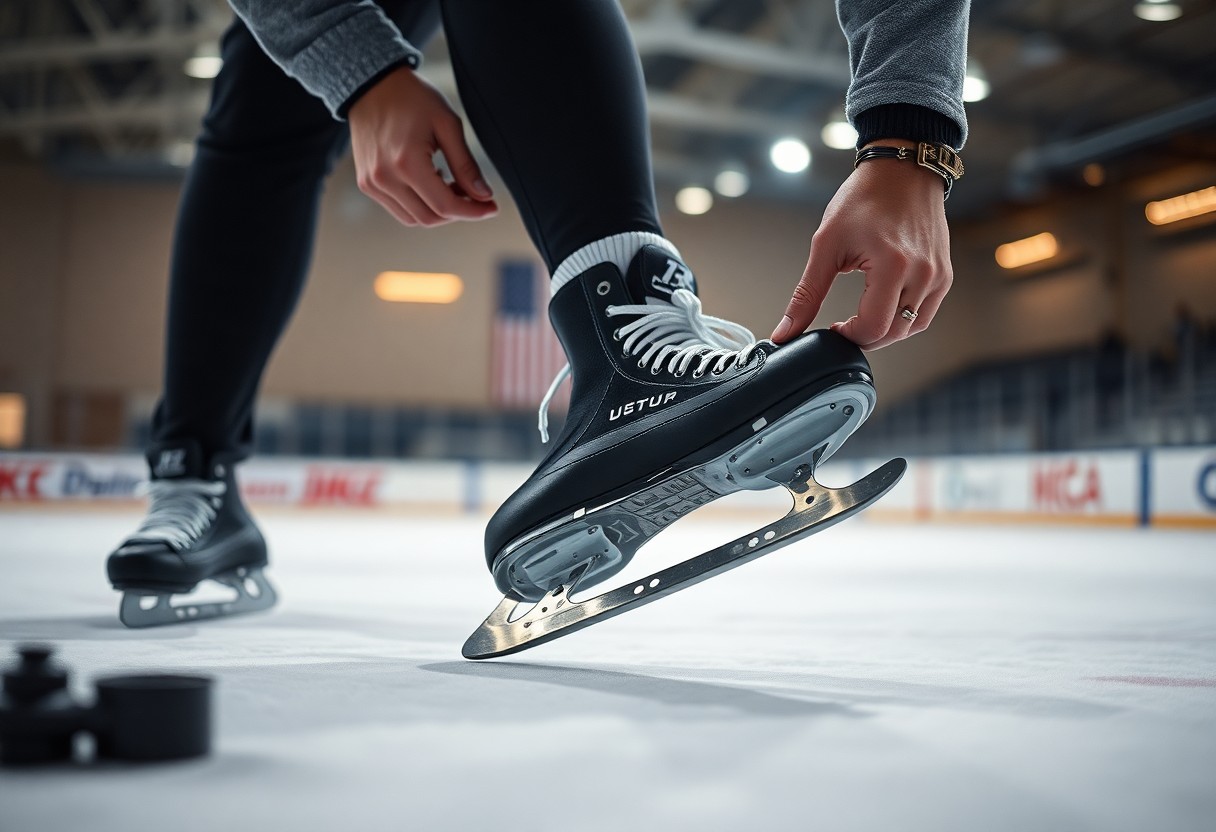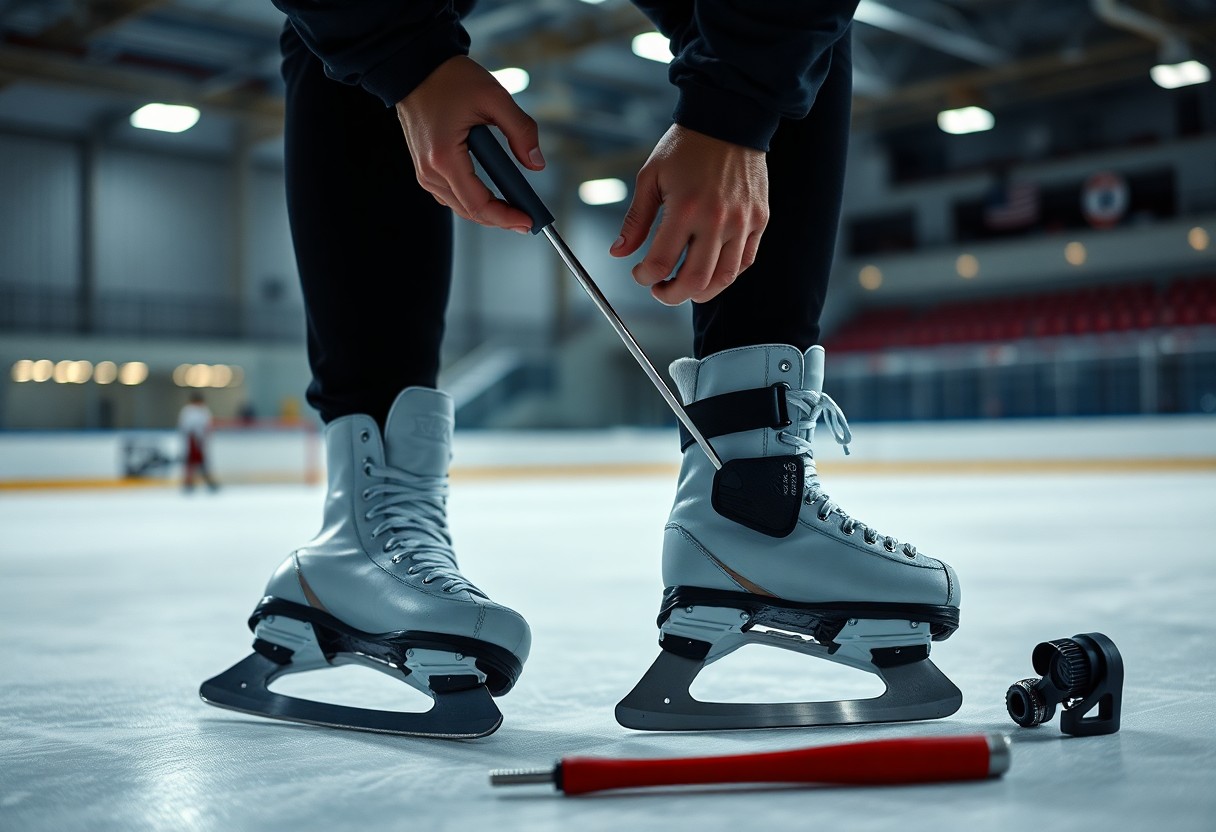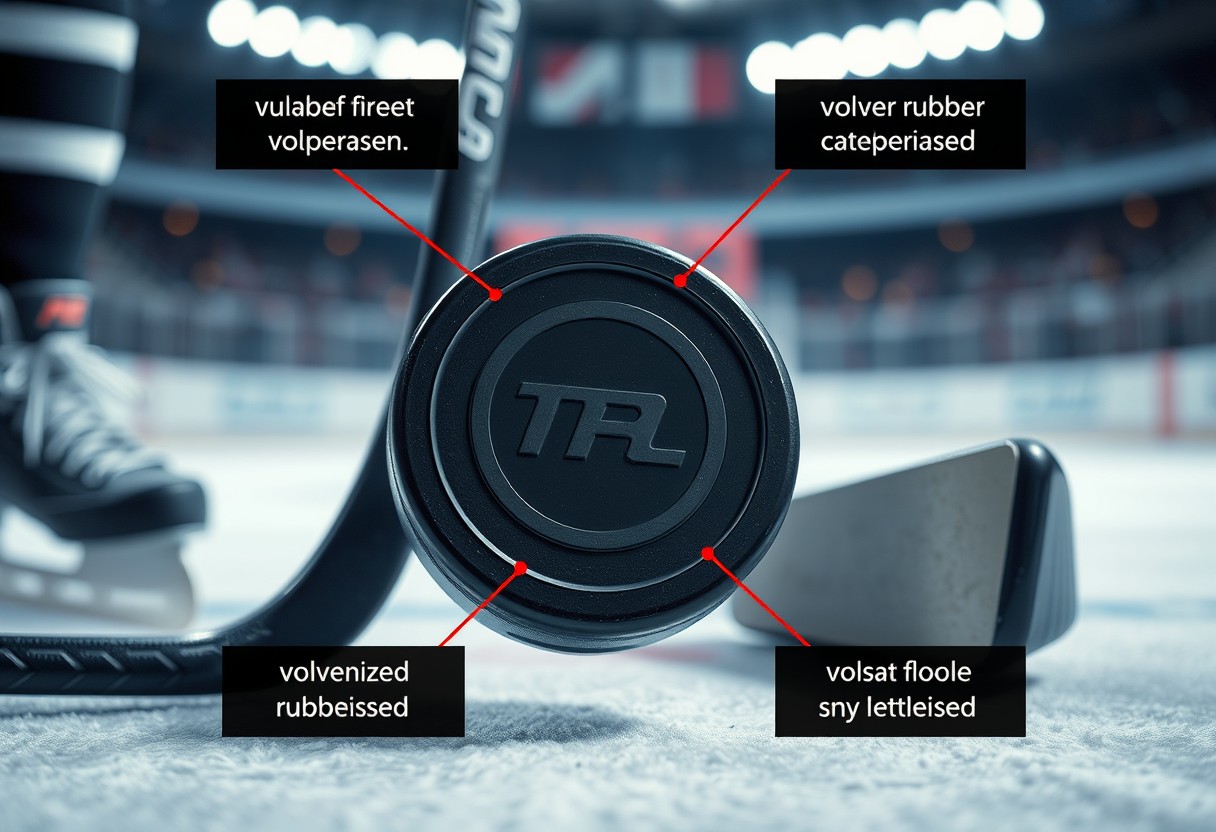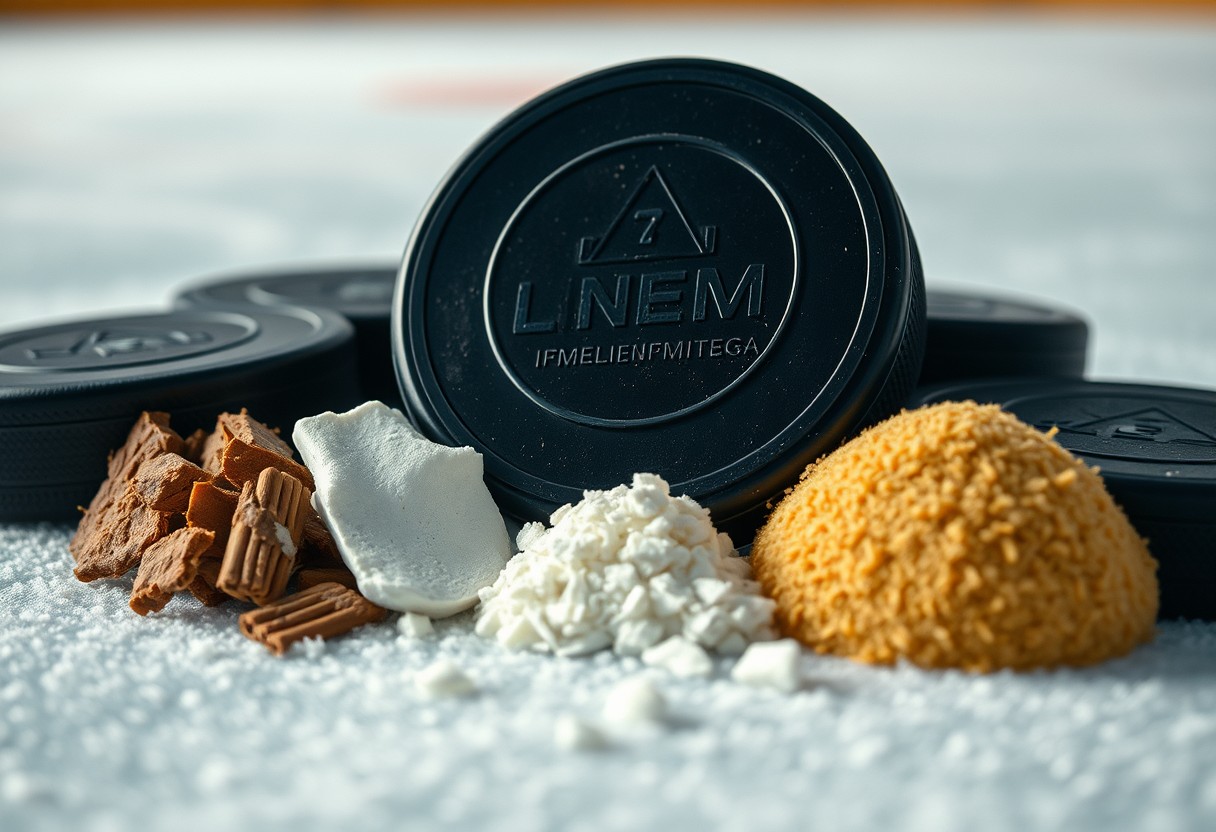There’s nothing quite like the feeling of gliding on the ice in properly fitted ice hockey skates. A perfect fit enhances your performance and provides the support you need to skate effectively. In this guide, you’ll learn how to measure your feet, choose the right skates, and make necessary adjustments to ensure a snug yet comfortable fit. Whether you’re a seasoned player or a newcomer to the sport, taking the time to fit your skates correctly will significantly impact your on-ice experience.

Understanding Ice Hockey Skates
Before you hit the ice, it’s important to grasp the fundamentals of ice hockey skates. These specialized skates are designed to provide support, agility, and speed, with features that cater specifically to the needs of hockey players. Knowing how they work and what to expect can significantly enhance your skating experience and overall performance on the rink.
Types of Ice Hockey Skates
Some of the primary skate styles include:
- Recreational Skates
- Intermediate Skates
- Advanced Skates
- Goalie Skates
- Custom Fit Skates
Thou should select the type of skate that aligns best with your playing style and proficiency level.
| Type of Skate | Description |
| Recreational Skates | Designed for casual skating and beginners. |
| Intermediate Skates | For more experienced players looking for better performance. |
| Advanced Skates | Features top-tier materials for elite athletes. |
| Goalie Skates | Specifically designed for goalies with a focus on protection. |
| Custom Fit Skates | Tailored to your foot shape for optimal comfort. |
Key Components of Ice Hockey Skates
For a deeper understanding, you need to familiarize yourself with the key components of ice hockey skates. Every part plays a significant role in delivering comfort and performance while you skate.
The primary components include the boot, blade, holder, and lacing system. The boot provides ankle support and is often made of materials that enhance stiffness and durability. The blade is critical for your glide and control, while the holder secures the blade to the boot and allows for quick blade replacement. Finally, the lacing system helps to achieve a snug fit, ensuring stability as you move on the ice.
How to Choose the Right Size
If you want the best performance on the ice, selecting the right size of skates is necessary. Make sure to try on skates in various brands, as they may fit differently. Your feet should feel snug but not cramped, allowing for comfort while still providing the necessary support. This ensures that your foot doesn’t slide around inside the skate, which can lead to blisters and affect your game.
Measuring Your Foot
Foot size is the starting point for finding the right skate. To measure your foot, stand on a piece of paper and trace around it, then measure the longest distance from heel to toe. Make sure to measure both feet, as one may be slightly larger, and always base your purchase on the larger foot measurement.
Sizing Charts and Fit Considerations
Now, it’s important to consult sizing charts that correspond to the specific brand of skates you are considering. Each brand may have slight variations in their sizing, and understanding these differences can help guide your choice. Look for fit options such as ‘D’ for standard width and ‘EE’ for wide feet.
Charts typically provide a comparison between your foot measurements and the appropriate skate sizes. These can be helpful in finding the right size, but keep in mind that personal comfort can vary. Pay attention to how the skates feel when laced up. You want heel lock without pinching, as a good fit will enhance both your control and stability on the ice.
How to Try On Skates Properly
While trying on ice hockey skates, it’s important to ensure that you are wearing the right gear. Start by loosening the laces, slide your foot into the skates, and then tighten the laces while standing. Your heel should remain in place, and your toes should barely touch the toe cap. Make sure to walk around and flex your ankles to get a better feel for the skates, as this will help you determine the right fit before hitting the ice.
The Right Socks for Fitting
If you want to achieve the best fit while trying on your skates, wearing the proper socks is key. Choose athletic, moisture-wicking socks that will provide cushioning without unnecessary bulk. Avoid cotton socks, as they tend to retain moisture and can cause discomfort. A thinner sock allows for better control and feel of your skates, ensuring an optimal fit as you try them on.
Testing for Comfort and Support
On your feet, comfort and support are paramount when testing skate fit. Ensure that your instep and arch are adequately supported, and that your ankle feels secure without excessive pressure. Give each skate a proper test by standing, walking, and moving side to side. This will allow you to evaluate their overall comfort and make adjustments if necessary.
Comfort is vital in determining whether you’ve found the right pair of skates. After adequate testing, your toes should slightly brush against the front, but not feel cramped. When standing up, your heel should remain locked in place without lifting. As you shift your weight and perform different movements, notice if there are any pinch points or areas of discomfort. If you feel significant pressure or pain, it may be time to consider a different fit or size for your skating experience.
Tips for Breaking In New Skates
For an enjoyable on-ice experience, properly breaking in your new skates is crucial. Here are a few tips to ease the process:
- Wear your skates around the house for short periods.
- Use a heat method to mold the skates to your feet.
- Perform gentle stretches and exercises with the skates on.
- Gradually increase your time on the ice.
Any discomfort should diminish as the skates adjust to your feet.
Gradual Wear-in Process
With new skates, take a gradual approach to wearing them in. Start by wearing your skates for short sessions off the ice, allowing your feet to adjust to the fit. Transition to wearing them during practice sessions, incrementally increasing the duration each time. This method will help avoid blisters and discomfort while helping the boots mold to the natural shape of your feet.
Maintenance and Care Techniques
Gradual maintenance is key to ensuring your skates stay in excellent condition. Regularly check for any signs of wear, clean the blades, and ensure the laces are intact and functioning. Dry your skates thoroughly after each use and store them in a cool, dry place.
Another important aspect of maintenance is sharpening your skate blades. Regularly check their sharpness and sharpen them as needed to maintain optimal performance. Conditionally, inspect the toe caps and heel guards for any damage, as replacing these parts will extend the life of your skates. Taking the time to care for your skates will greatly enhance your game experience and performance on the ice.

Factors Affecting Skate Fit
Keep in mind that several factors can influence the fit of your ice hockey skates. Understanding these variables is key to achieving optimal comfort and performance. Consider the following:
- Foot shape
- Width and volume
- Boot stiffness
- Sock thickness
- Playing style
Perceiving these factors can guide your decision in finding the perfect skate fit.
Foot Shape and Width
Width plays a significant role in finding the right fit for your ice hockey skates. Each player has a unique foot shape and width that affects how they interact with the boot. Various brands offer skates in different widths to accommodate narrow, regular, or wide feet, ensuring you can maximize both comfort and performance on the ice.
Personal Preferences and Playing Style
While your personal preferences and playing style are vital considerations when fitting your skates. Factors like how you skate, your aggression on the ice, and your position can dictate what type of skate fit suits you best. For instance, a forward may prefer a snug fit to enhance agility, whereas a defenseman might opt for more padding for better support.
It’s important to tailor your skate fit to align with how you play. If you enjoy quick maneuvers, a tighter fit could provide the responsiveness you need. Conversely, if you value stability during play, a slightly looser fit with added cushioning may be more suitable. Balancing these elements will help you achieve not only a comfortable fit but also the performance you desire on the ice.
Common Fitting Problems and Solutions
All skaters experience fitting challenges at some point. The most frequent issues include blisters, discomfort, and varying levels of support. Fortunately, these problems can often be resolved with minor adjustments or the right accessories. Understanding how to correctly size and customize your skates will enhance your performance and overall enjoyment on the ice.
Dealing with Blisters and Discomfort
Blisters can be a frustrating issue when breaking in new skates. To prevent them, make sure you wear moisture-wicking socks that fit snugly. Additionally, consider using blister pads or tape on any hot spots. If blisters do occur, allow them to heal properly, and avoid popping them to minimize the risk of infection.
Adjusting Tightness and Support
You should pay attention to how tight your skates feel during use. If they are too loose, your ankles may lack support, which can lead to poor skating performance. Conversely, overly tight skates can create pressure points, leading to discomfort. Assess the fit by loosening or tightening the laces gradually until you find a balance that provides both comfort and adequate support.
Common adjustment techniques involve tightening the top lace holes for ankle support, while leaving the lower ones a bit looser for freedom of movement. Experiment with the lacing pattern to discover what feels best for you. If you continue to struggle, consider using custom insoles for additional arch support or ankle wraps to protect against strain. Your skating performance significantly relies on the right fit, so don’t hesitate to make these changes.
Final Words
Now that you understand how to fit your ice hockey skates properly, you can enhance both your comfort and performance on the ice. Ensure your skates are snug but not overly tight, checking for a secure heel lock and sufficient toe space. Lace them correctly to provide the right support while allowing for flexibility in your ankle. By taking the time to fit your skates appropriately, you’ll enjoy a more responsive and enjoyable skating experience, boosting your confidence and skills during games and practice.




